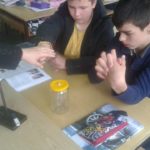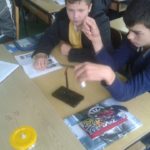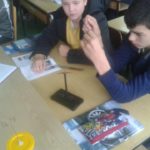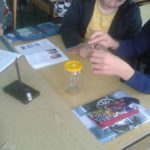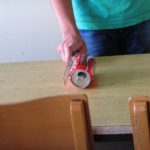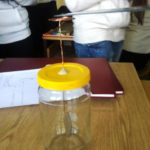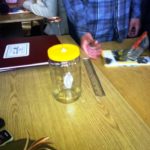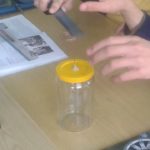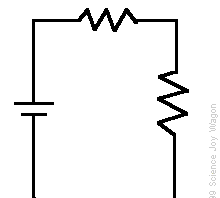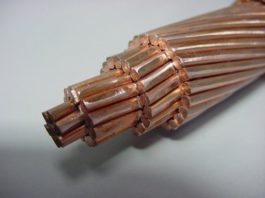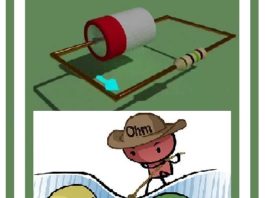
Charging by friction, contact or induction. If you rub a balloon on your hair, electrons will be rubbed off your hair onto the balloon (charging by friction). 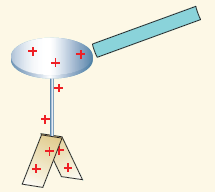

If you then place the negatively charged balloon near a neutral wall, the balloon will repel some of the electrons near it in the wall. This is inducing a charge separation in the wall. Now the wall, while still neutral, has a positive charge near the balloon.
Conservation of charge is believed to be a universal conservation law; there has never been any experimental evidence for a violation of this principle. Even in high-energy interactions in which subatomic particles are created and destroyed, the net charge of all the particles is exactly constant. Second, the magnitude of the charge of the electron or proton is a natural unit of charge.
Electroscope
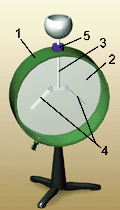 An electroscope is an early scientific instrument that is used to detect the presence and magnitude of electric charge on a body. It was the first electrical measuring instrument. Electroscope is a simple device, and consists of: Electroscope is a simple device, and consists of: 1 – external metal boxes,
An electroscope is an early scientific instrument that is used to detect the presence and magnitude of electric charge on a body. It was the first electrical measuring instrument. Electroscope is a simple device, and consists of: Electroscope is a simple device, and consists of: 1 – external metal boxes,
2 – an electroscope casing,
3 – metal rods,
4 – aluminum sheets,
5 – insulators
When the electroscope is uncharged the leaves hang vertically. The scope is charged by placing a charged rod near the sphere. The rod is charged by friction. If a rubber rod is rubbed with fur, electrons will be rubbed off the fur and onto the rubber rod, leaving the rod negatively charged. If a glass rod is rubbed with silk, electrons will be rubbed off the rod onto the silk, leaving the glass rod positively charged.
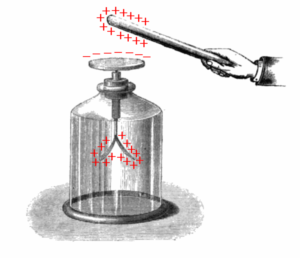
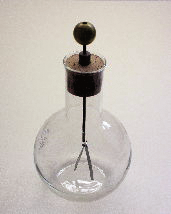
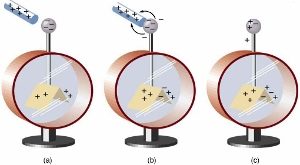
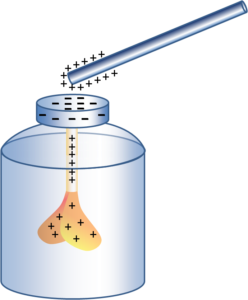
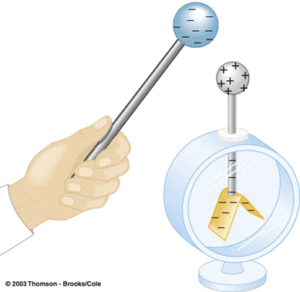
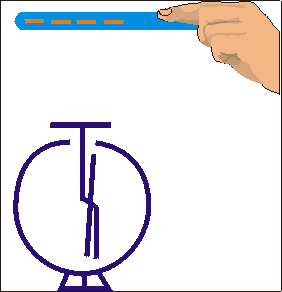
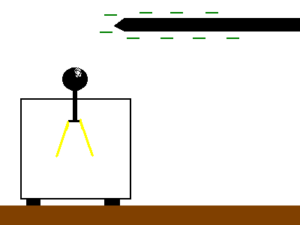
Conservation of charge The algebraic sum of all the electric charges in any closed system is constant. Charge can be neither created nor destroyed; it can only move from one place or object to another.
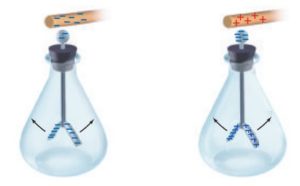
Example 2: Let us elect two electroscopes with the same quantities of electricity of the opposite sign. Electroscope approached with a negative rod like sharge foils repel. Electroscope approached with a positive rod like sharge foils repel.
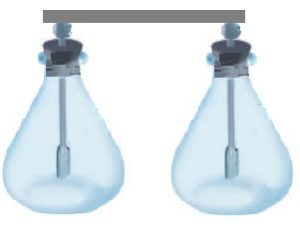
What happens if the electroscopes are joined by a metal rod or wire? Connect two electroscopes together with wire and charge one electroscope. If we connect them with a metal conductor, electroscopes will be discharged If A has +q charge and electroscope has –q charge, total charge becomes zero and electroscope and rode becomes neutral and leaves are closed.
Conductors and Insulators
Some materials let electricity pass through them easily. These materials are known as electrical conductors. Many metals, such as copper, iron and steel, are good electrical conductors. That is why the parts of electrical objects that need to let electricity pass through are always made of metal.
Metal is used in plugs to allow electricity to transfer from the wall socket, through the plug, and into a device such as a radio or TV. In a light bulb, the metal filament conducts electricity and causes the light bulb to light up.
Some materials do not allow electricity to pass through them. These materials are known as electrical insulators. Plastic, wood, glass and rubber are good electrical insulators. That is why they are used to cover materials that carry electricity. The plastic covering that surrounds wires is an electrical insulator. It stops you from getting an electrical shock.
The figure shows that the elements on the left side of the periodic system are conductors, and on the right side show insulators.
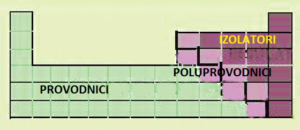
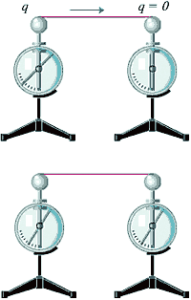
Primer 3: Izvedimo ogled sa dve elektroskopa tako što jedan elektroskop napolje, dok drugi nije elektrolizan. Nakon toga ih spojimo metalnim šipkom. Primjetićemo da se i drugi elektroskop naelektrisao. Možemo zaključiti da je jednaka količina naelektrisanja prenesena na drugi elektroskop, koji se nalazio, a metalna šipka se u ovom primeru pokazala kao provodnik.
Example 4: Human body conductor. Creating a static charge. When objects have the same charge, they repel each other, which means they try to get as far from each other as possible. This is why static electricity makes your hair stand up. Each hair has a positive charge and repels against the other hairs.
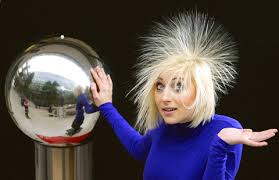
Example 5: As you walk over carpet in socks, your feet rub electrons off the carpet, leaving you with a slightly negative static charge. When you reach for a doorknob, you get a shok as electrons jump from you to the knob, which conducts electricity.
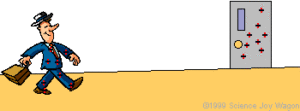
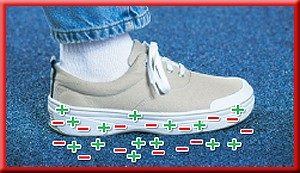

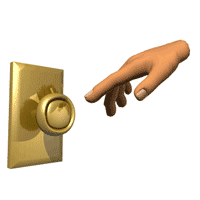

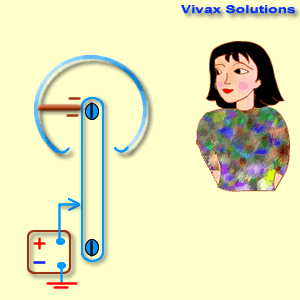 Example 6: A Van de Graaff generator consists of a large metal dome attached to a tube, within which a long rubber belt is turning on rollers. As the belt turns friction between it and the bottom roller cause the e–’s to move from the belt to the roller. A metal brush then drains these e–’s away and grounds them. So, as the belt passes the bottom roller it acquires a positive charge, which is transported to the top of the device (inside the dome). Here another metal brush facilitates the transfer of electrons from the dome to the belt, leaving the dome positively charged.
Example 6: A Van de Graaff generator consists of a large metal dome attached to a tube, within which a long rubber belt is turning on rollers. As the belt turns friction between it and the bottom roller cause the e–’s to move from the belt to the roller. A metal brush then drains these e–’s away and grounds them. So, as the belt passes the bottom roller it acquires a positive charge, which is transported to the top of the device (inside the dome). Here another metal brush facilitates the transfer of electrons from the dome to the belt, leaving the dome positively charged.
Try to INSTALL A SIMPLE ELEKTROSCOPE ONLY
Required material:
– ordinary glass jars
– bigger hook
– a piece of copper band about 20 cm long.
– your fountain
– that you have a woolen sweater on you
1 – Take the jar, fasten the clip and transfer the copper tape over it, as shown in the picture.
2 – Throw the pen on the sleeve of your sweater
3 – Touch the tip of the paper clip and see that the sheets will be separated
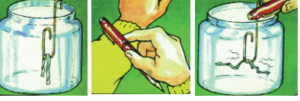
Explanation
When we penetrated the pen with rubbing on the wool and touched it with the clip, the electricity was transferred to the copper sheet and it was charged. Since it was electrically charged with the same type of electricity, the leaves were separated. It means that using this simple electroscope we can prove whether a body is electrified.

